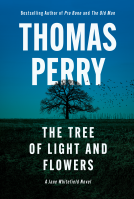
The Bonanza King
John Mackay and the Battle over the Greatest Riches in the American West
by Gregory Crouch
This title was previously available on NetGalley and is now archived.
Buy on Amazon
Buy on BN.com
Buy on Bookshop.org
*This page contains affiliate links, so we may earn a small commission when you make a purchase through links on our site at no additional cost to you.
Send NetGalley books directly to your Kindle or Kindle app
1
To read on a Kindle or Kindle app, please add kindle@netgalley.com as an approved email address to receive files in your Amazon account. Click here for step-by-step instructions.
2
Also find your Kindle email address within your Amazon account, and enter it here.
Pub Date Jun 19 2018 | Archive Date Jun 19 2018
Description
“A monumentally researched biography of one of the nineteenth century’s wealthiest self-made Americans…Well-written and worthwhile” (The Wall Street Journal) it’s the rags-to-riches frontier tale of an Irish immigrant who outwits, outworks, and outmaneuvers thousands of rivals to take control of Nevada’s Comstock Lode.
Born in 1831, John W. Mackay was a penniless Irish immigrant who came of age in New York City, went to California during the Gold Rush, and mined without much luck for eight years. When he heard of riches found on the other side of the Sierra Nevada Mountains in 1859, Mackay abandoned his claim and walked a hundred miles to the Comstock Lode in Nevada.
Over the course of the next dozen years, Mackay worked his way up from nothing, thwarting the pernicious “Bank Ring” monopoly to seize control of the most concentrated cache of precious metals ever found on earth, the legendary “Big Bonanza,” a stupendously rich body of gold and silver ore discovered 1,500 feet beneath the streets of Virginia City, the ultimate Old West boomtown. But for the ore to be worth anything it had to be found, claimed, and successfully extracted, each step requiring enormous risk and the creation of an entirely new industry.
Now Gregory Crouch tells Mackay’s amazing story—how he extracted the ore from deep underground and used his vast mining fortune to crush the transatlantic telegraph monopoly of the notorious Jay Gould. “No one does a better job than Crouch when he explores the subject of mining, and no one does a better job than he when he describes the hardscrabble lives of miners” (San Francisco Chronicle). Featuring great period photographs and maps, The Bonanza King is a dazzling tour de force, a riveting history of Virginia City, Nevada, the Comstock Lode, and America itself.
Born in 1831, John W. Mackay was a penniless Irish immigrant who came of age in New York City, went to California during the Gold Rush, and mined without much luck for eight years. When he heard of riches found on the other side of the Sierra Nevada Mountains in 1859, Mackay abandoned his claim and walked a hundred miles to the Comstock Lode in Nevada.
Over the course of the next dozen years, Mackay worked his way up from nothing, thwarting the pernicious “Bank Ring” monopoly to seize control of the most concentrated cache of precious metals ever found on earth, the legendary “Big Bonanza,” a stupendously rich body of gold and silver ore discovered 1,500 feet beneath the streets of Virginia City, the ultimate Old West boomtown. But for the ore to be worth anything it had to be found, claimed, and successfully extracted, each step requiring enormous risk and the creation of an entirely new industry.
Now Gregory Crouch tells Mackay’s amazing story—how he extracted the ore from deep underground and used his vast mining fortune to crush the transatlantic telegraph monopoly of the notorious Jay Gould. “No one does a better job than Crouch when he explores the subject of mining, and no one does a better job than he when he describes the hardscrabble lives of miners” (San Francisco Chronicle). Featuring great period photographs and maps, The Bonanza King is a dazzling tour de force, a riveting history of Virginia City, Nevada, the Comstock Lode, and America itself.
Available Editions
| EDITION | Other Format |
| ISBN | 9781501108198 |
| PRICE | $30.00 (USD) |
| PAGES | 384 |
Average rating from 8 members
Readers who liked this book also liked:
The Book Club for Troublesome Women
Marie Bostwick
Historical Fiction, Literary Fiction, Women's Fiction
Marie Bostwick
Historical Fiction, Literary Fiction, Women's Fiction
The Bookstore Diaries (Deluxe Limited Edition)
Susan Mallery
General Fiction (Adult), Romance, Women's Fiction
Susan Mallery
General Fiction (Adult), Romance, Women's Fiction
Where the Wildflowers Grow
Terah Shelton Harris
General Fiction (Adult), Multicultural Interest, Women's Fiction
Terah Shelton Harris
General Fiction (Adult), Multicultural Interest, Women's Fiction


















